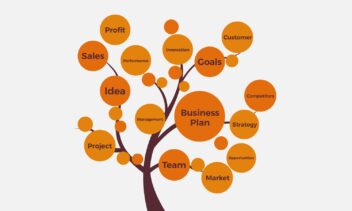For our clients, we utilise creative and directional media to target two main audiences:
- Unaware customers
- Problem aware customers
By definition:
-
Creative media increases awareness and creates an interest in your products or services – this media is used for sellers to search for buyers and targets unaware customers
-
Directional media is placed in front of those who are already looking for your product or service – this media is used for buyers searching for a seller and targets problem aware customers
Used correctly, these different types of media help customers become aware of products and services that can address their problems and needs by offering a solution.
How are they used?
We use creative and directional media to target different audiences in purchasing, using what Shopify calls the ‘content marketing funnel.’ There are a number of varying versions of the ‘buyer’ or ‘purchasing’ funnel, but for now, let’s pretend your chosen buyer funnel looks somewhat like this:
- Awareness & Problem Recognition
- Opinion
- Consideration
- Preference & Evaluation
- Desire
- Transaction & Adoption
- Advocacy
At StrategiQ, if we were to target audiences who are not aware of marketing, website, SEO or design needs, creative media would be the best option because it increases awareness of brands, products and services. Broken down, it would look something similar to this:
- Awareness: Buyer recognises the StrategiQ name because of different types of creative media including social media posts, published research, flyers, websites, blog articles, radio talks, podcasts, magazines, brochures, and/or direct mail/email. Buyer begins to recognise a potential need for services and realises that StrategiQ could potentially assist.
- Opinion: Buyer forms an opinion of StrategiQ based on personal experiences, testimonial reviews and personal perception.
- Consideration: Buyer begins to completely define his/her problem and researches the options to solve it, comparing StrategiQ to other companies with the same solution.
- Preference & Evaluation: Buyer uses logical and emotional inclination to evaluate preference of StrategiQ over another company.
- Desire: Buyer chooses StrategiQ to provide the service and fulfil needs.
- Transaction & Adoption: Buyer forms a purchasing agreement with StrategiQ.
- Loyalty: Buyer becomes a repeat client for StrategiQ.
- Advocacy: Client provides positive reviews/testimonials for StrategiQ on Google, in other formats and to other companies.
On the other hand, if we are discussing audiences who are already aware of the solution they need in relation to StrategiQ, they would be influenced by directional media throughout the funnel. It would be slightly different and look like this:
- Problem Recognition: Buyer recognises that he or she needs services that StrategiQ provides (may or may not be thinking of StrategiQ during this process.)
- Opinion: Buyer forms an opinion of using an agency (like StrategiQ) based on personal experiences, testimonial reviews and personal perception.
- Consideration: Buyer begins to completely define his/her problem, formulate key questions and researches the options to solve it. The questions that the buyer asks determines what directional media impacts him or her. These could include PPC/Adwords campaigns, Google Remarketing, directories, yellow pages, search engine marketing, trade shows and exhibitions.
- Preference & Evaluation: Buyer uses logical and emotional inclination to evaluate preference of StrategiQ over another company.
- Desire: Buyer chooses StrategiQ to provide the service and fulfil needs.
- Transaction & Adoption: Buyer forms a purchasing agreement with StrategiQ.
- Loyalty: Buyer becomes a repeat client for StrategiQ.
- Advocacy: Client provides positive reviews/testimonials for StrategiQ on Google, in other formats and to other companies.
Both media assist with lead generation and brand recognition. How do you decide which type of media to implement?
For SEO reasons, experts in the industry, including TheDrum and Smart Insights, always recommend a mixture of different types of marketing in your strategy. Even so, we recognise that budget and business needs will determine how much you’ll need and when to execute, in order to ensure maximum return on investment. This also means that you should consider ‘why’ you have chosen this media – what are your objectives and how can your chosen media assist in achieving them?
As an illustration, say you want to increase awareness of your company culture, as a means of improving recruitment efforts of entry-level workers. You only have a small organic budget, but would ideally like to have 5 new applicants for a position that needs to be filled by the end of the month. For this, your budget and KPIs are both small and fairly manageable if you decide to primarily use organic LinkedIn, Facebook and Twitter as well as employee referrals. In this case, it is perfectly acceptable for you to utilise creative media as the more cost-effective option that can adequately fulfil this objective.
Alternatively, if your goal was to achieve a £100k e-commerce target each quarter, you will likely want to invest in paid campaigns that are targeted at the audience who are specifically searching for your product or service. For this situation, directional media is the best option to accomplish this goal based on budget and business needs.
Next Steps
Remember that there is no ‘one-fits-all’ solution because your choice of media is dependent on your business goal, campaign objective, time frame and budget. If you have any questions about your options or are having a hard time making a decision regarding this, feel free to get in touch.














